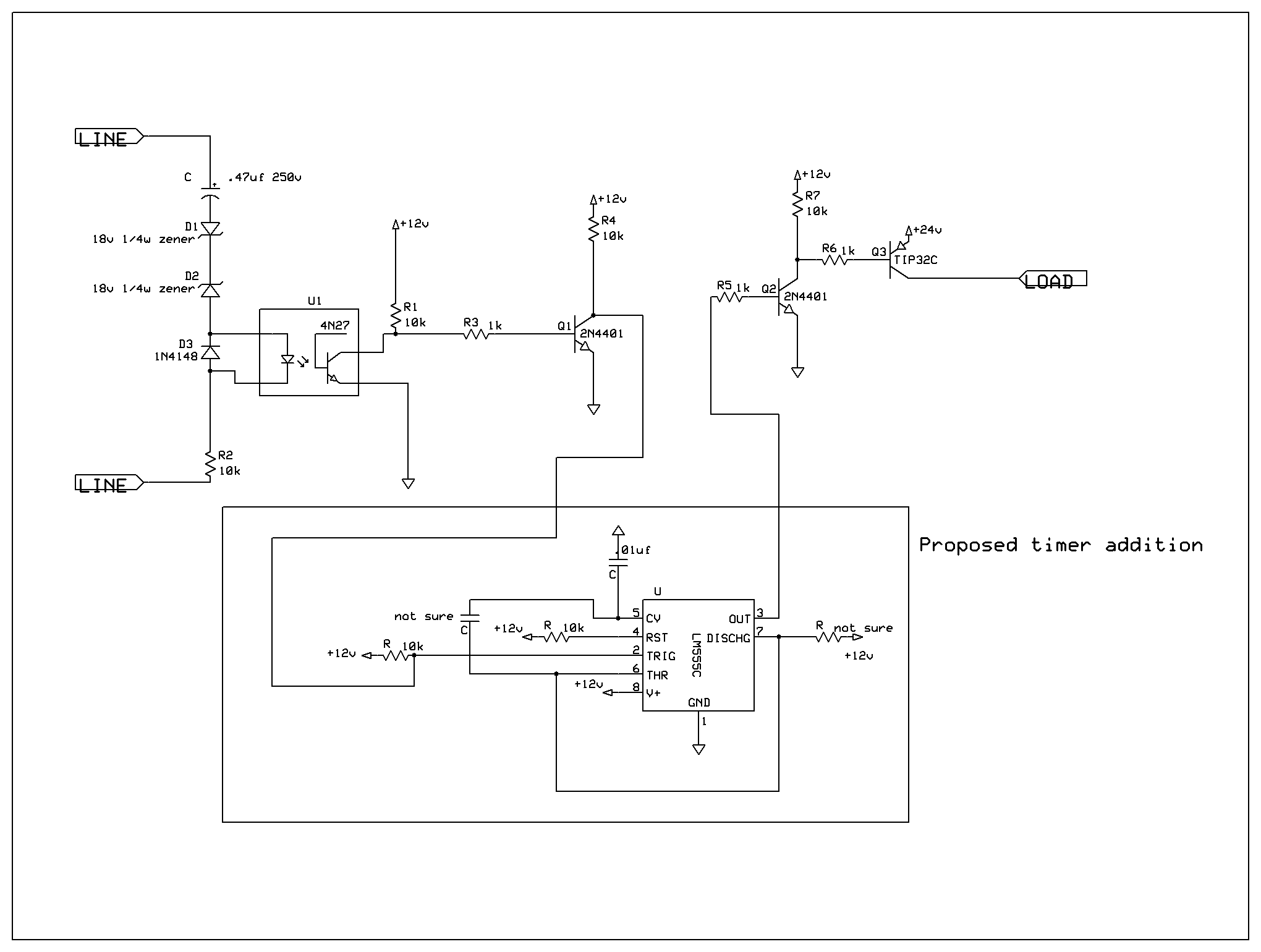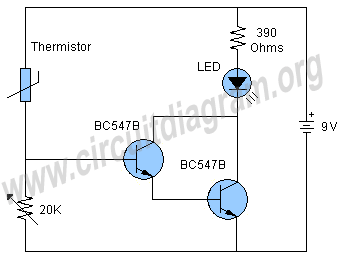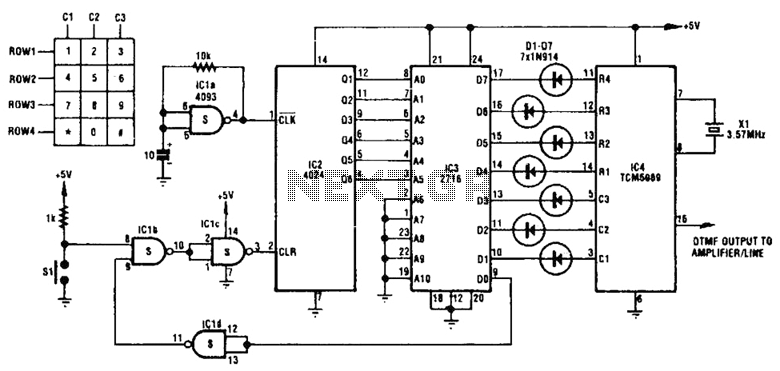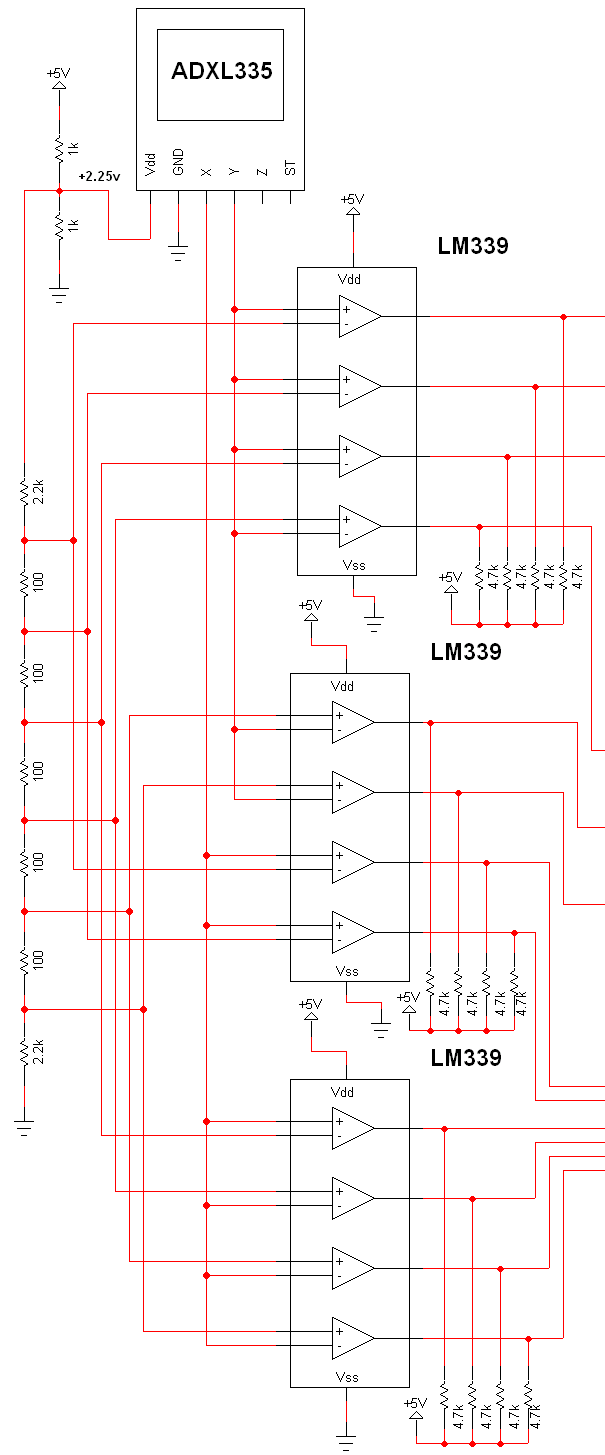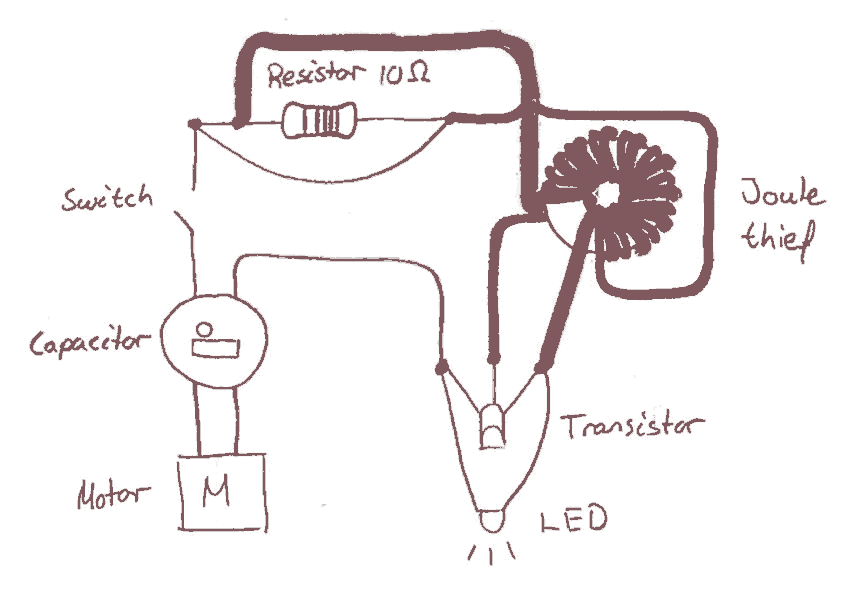
Closed-Loop Alarm Circuit
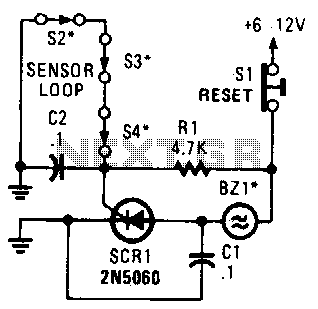
A string of three series-connected, normally closed switches is connected across the gate of a silicon-controlled rectifier (SCR). When one switch opens, the SCR is triggered through resistor R1, activating an alarm. The alarm is designed to be of the noninterrupting type.
This circuit configuration utilizes three normally closed switches, which are connected in series. The arrangement ensures that the SCR remains off under normal operating conditions. Each switch acts as a safety mechanism; if any one of the switches is opened, it allows current to flow through R1 to the gate of the SCR, thereby triggering it. The SCR, once triggered, allows current to pass through to the alarm, which is designed to be noninterrupting. This means that the alarm will sound continuously without interruption until the circuit is reset or power is removed.
The use of a noninterrupting alarm is critical in applications where continuous monitoring is essential. The alarm can be an audible signal, such as a buzzer or siren, ensuring that the activation is noticeable. The resistor R1 plays a crucial role in limiting the gate current to the SCR, protecting it from excessive current that could damage the component. The design must also consider the voltage and current ratings of all components involved, ensuring that they can handle the load without failure.
In practical applications, this circuit can be used in various safety systems, such as intrusion detection or equipment monitoring, where the opening of any switch indicates a fault condition or unauthorized access. The series connection of the switches adds a layer of redundancy; all switches must remain closed for the SCR to remain inactive, thereby enhancing the reliability of the system. Proper placement of the switches and selection of the alarm type are essential to ensure effective operation in the intended environment. A string of three series-connected, normally closed switches are connected across the gate of an SCR. When one opens, the SCR triggers via Rl, sounding an alarm. The alarm should be of the noninterrupting type. 🔗 External reference
This circuit configuration utilizes three normally closed switches, which are connected in series. The arrangement ensures that the SCR remains off under normal operating conditions. Each switch acts as a safety mechanism; if any one of the switches is opened, it allows current to flow through R1 to the gate of the SCR, thereby triggering it. The SCR, once triggered, allows current to pass through to the alarm, which is designed to be noninterrupting. This means that the alarm will sound continuously without interruption until the circuit is reset or power is removed.
The use of a noninterrupting alarm is critical in applications where continuous monitoring is essential. The alarm can be an audible signal, such as a buzzer or siren, ensuring that the activation is noticeable. The resistor R1 plays a crucial role in limiting the gate current to the SCR, protecting it from excessive current that could damage the component. The design must also consider the voltage and current ratings of all components involved, ensuring that they can handle the load without failure.
In practical applications, this circuit can be used in various safety systems, such as intrusion detection or equipment monitoring, where the opening of any switch indicates a fault condition or unauthorized access. The series connection of the switches adds a layer of redundancy; all switches must remain closed for the SCR to remain inactive, thereby enhancing the reliability of the system. Proper placement of the switches and selection of the alarm type are essential to ensure effective operation in the intended environment. A string of three series-connected, normally closed switches are connected across the gate of an SCR. When one opens, the SCR triggers via Rl, sounding an alarm. The alarm should be of the noninterrupting type. 🔗 External reference
Warning: include(partials/cookie-banner.php): Failed to open stream: Permission denied in /var/www/html/nextgr/view-circuit.php on line 713
Warning: include(): Failed opening 'partials/cookie-banner.php' for inclusion (include_path='.:/usr/share/php') in /var/www/html/nextgr/view-circuit.php on line 713
